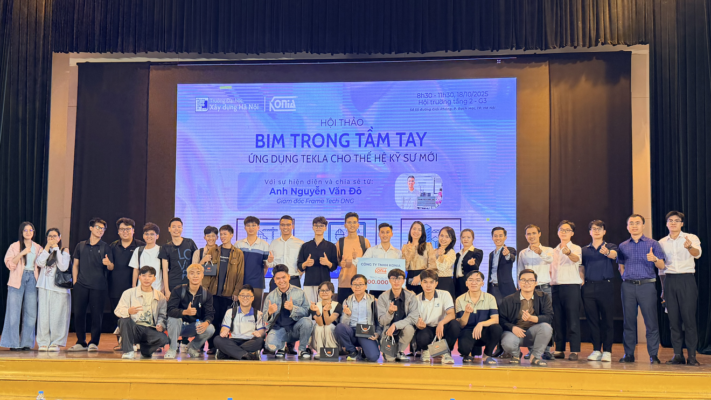Human factors can affect performance and, if left unaddressed, they can deeply affect employee safety and health. When you implement a strategic approach to preventing incidents through the use of human performance tools, you’re encouraging your workers to anticipate and prevent error. Keeping your employees focused on improving their performance is essential for any business to be successful, not just in terms of profit but for safety and operations as well.
You’re definitely familiar with the physical tools we use to do our jobs each day but there are also tools in the human performance improvement toolkit that help us perform our work safely and without incident. Properly implementing and using human performance tools plays a critical role in keeping everyone on the jobsite safe, particularly in the construction industry.
While it’s important to utilize each type of human performance tool in their proper capacity, there are a handful that are easier to perform with the use of a BIM software like Tekla Structures.
1. Procedure and Adherence
Your business probably already has procedures in place to incorporate the policies, operating experience, effective work practices and management
decisions about how a task is to be performed. Adherence to these procedures means following the intent and direction provided. However, when workers are forced to interpret a procedure’s use and applicability, the chance for error is increased.
Tekla Structures makes it easy to keep everyone on track during a project by providing a platform that streamlines collaboration and the flow of information. You can also import, export, and link your data with other software solutions, digital construction tools and fabrication machinery for smoother workflows.
When you have an accurate, information-rich 3D model that automatically updates after any revision or change, you help eliminate confusion during the entire process. From planning to construction, information comes from one single source, so you don’t have to worry about outdated or incorrect documentation. All of your employees are on the same page during the entire project and can easily review the steps for construction.
2. Self-Checking (S-T-A-R)
Self-checking (Stop-Think-Act-Review) is one of the most important human performance tools you should be encouraging your employees to follow. It’s particularly effective during skill-based tasks that—while essential to the construction of a building—can be performed without much conscious thought, like attaching bolts or pouring foundations.
This technique helps boosts attention at important points in an activity
before an essential action is performed. If an employee isn’t focused on the task at hand, error is likely. But, just by taking a moment to think about what they’re doing, they can focus on the intended action and its expected outcome.
By using Tekla Structures to manage information for your projects, you make it easy for your employees to know exactly what’s needed for the next steps they need to perform and quickly review after they’ve completed a task. When that information is readily available, employees can use the S-T-A-R method more effectively, because they’re more knowledgeable about what they need to be doing.
3. Independent Verification
Successfully implementing independent verification into your workflow means encouraging your employees to verify the conditions of a component, system
or document they’re currently using. The point isn’t just to make sure the component is working properly, but to also check a component’s or product’s status or quality independent of whomever established its present state.
Independent verification has a higher probability of catching an error
than by simply using peer-checking or second-party verification, because the second person is not influenced by the first person and has freedom
of thought, making it an essential tool for working effectively. The true independence this tool requires means everyone on your team must have access to truly accurate data.
Tekla Structures provides you with an easy way to manage and share multi-material 3D models packed with the valuable information your crew needs to verify their tasks throughout the construction process.
4. Pre-Job Brief/Post-Job Review
While technically these are two separate human performance tools, they are essential to each other. Because the 3D models in Tekla Structures are highly detailed, they can be used during pre-job briefs to help provide clarity of work tasks ahead and provide effective communication.
Then, after the construction project has been successfully completed, the next step should be a post-job review as an opportunity for employees to provide feedback. Once again, these same detailed 3D models can help you easily zero in on any pain points workers may have had during the progress of the project and make adjustments for the next project.
Encouraging your workers to implement these, and other, human performance tools is a key way to make every project you work on safer and more efficient. When you add the accuracy and level of detail you get from the 3D models in Tekla Structures, you’re able to enhance your workers’s ability to get their jobs done effectively, without sacrificing the safety of your employees.
With Tekla Structures, you’re able to ensure constructability, foresee possible challenges and coordinate effectively to turn any type of building project into reality.
Source: Tekla Blog
Technical Support:
Mr. Hoa – (+84) 964.371.88 | hoa.nguyen@konia-group.com
Customer Service:
Ms. An – (+84) 903.92.07.92 | an.do@konia-group.com
Business Consultant:
Ms. Hien – (+84) 8.222.38886 | thuhien.nguyen@konia-group.com
Ms. Ngoc – (+84) 965.694.591 | ngoc.vu@konia-group.com


 Tiếng Việt
Tiếng Việt



















